The 2022 Bentley Flying Spur Hybrid Surprised Me
Selling patience as a virtue to the super-rich who make up Bentley's clientele seems like a challenge even for the etiquette-schooled British automaker, but with the promised shift to full electrification still a few years out, it's cars like the new 2022 Flying Spur Hybrid which will bridge gasoline and green. Eventually, Bentley plans to retire its V8 and W12 gas engines altogether but, until that happens, the third addition to the Flying Spur line-up offers a taste of what's to come.
Despite what preconceptions you might have about Bentley's audience, the automaker's own research suggests its owners are unexpectedly open to electrification. Over 60% apparently said they were "ready" for a fully-electric Bentley when the question was posed in 2021, more than double the number from the previous year.
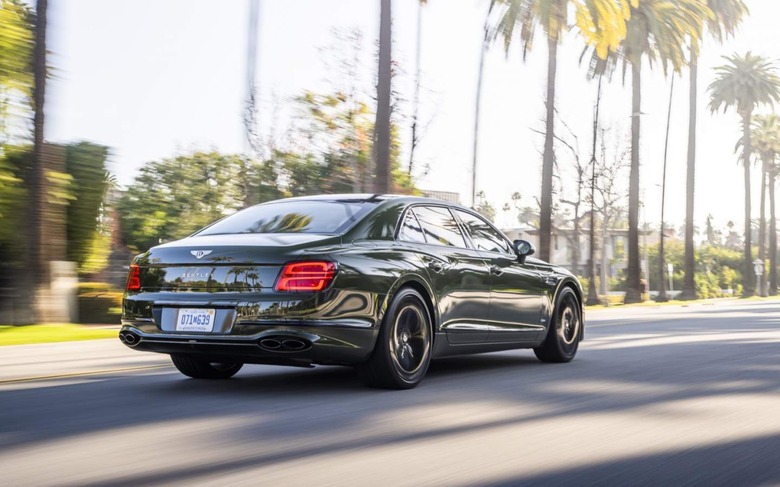
Bentley isn't expecting its buyers to be entirely new to EVs, and there's the assumption that many will already have a fully-electric car – and the charger for it – in their capacious garage. What they don't have is an electric Bentley, something the Bentayga Hybrid already hinted could be a winner. Currently, 1 in 5 Bentayga sales are of the plug-in hybrid (PHEV) version, and now it's the turn of its sedan cousin to blend in some volts.
The Flying Spur is a handsome sedan, gracefully huge, though safe from cartoonish proportions. For its first hybrid model, Bentley wisely opted for a deft touch: you could easily miss the "Hybrid" badging just aft of the front wheels, and the second panel hiding the charging port.
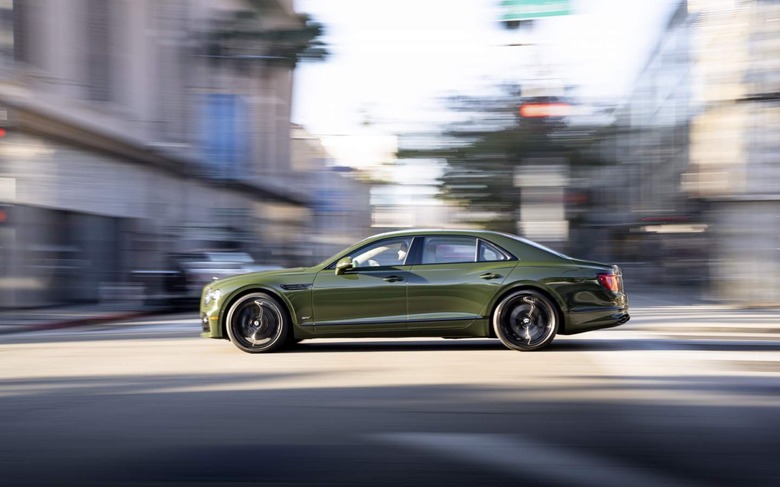
Few cars run the gamut so broadly as the Flying Spur does when it comes to overall tone. Want all the chrome and classic colors? The new PHEV looks right at home. Appetites run to the avant-garde? 22-inch wheels and Azure Purple paint are just one option there. Meanwhile, if sleek-and-sinister is the goal, a chrome delete and black wheels leave the Flying Spur looking like a whole different – and menacing – car. Pricing is yet to be confirmed, though expect things to start at around $210,000 before you start going wild with the options.
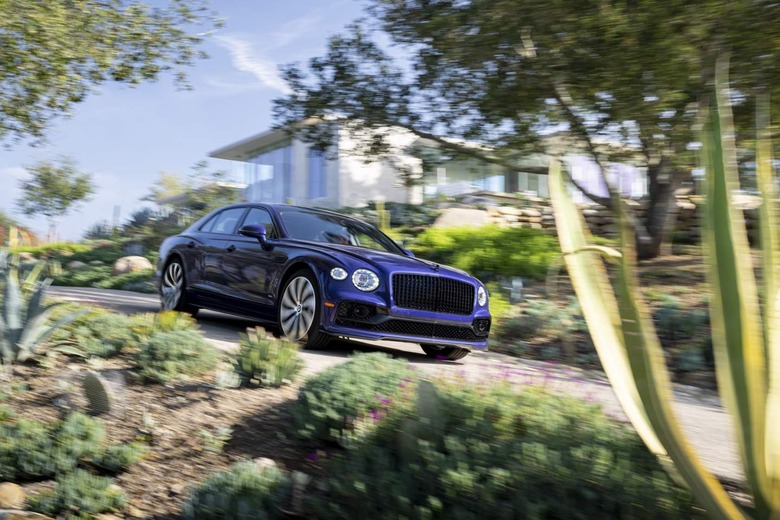
Just as with the Bentayga, the gas-electric model makes a solid argument from the outset that it's the Flying Spur to have. Electrification feels, quite honestly, like the obvious end-game for luxury vehicles: that instantaneous hit of torque when your foot grazes the accelerator suits perfectly the ethos of "I want it now."
The E-Motor contributes up to 295 lb-ft to the Flying Spur Hybrid's torque, and up to 134 horsepower. The 2.9-liter V6 twin-turbo gas engine has 406 lb-ft and 410 hp to play with. Total system power is 536 hp and 553 lb-ft, down ever so slightly compared to the 4.0-liter V8 twin-turbo, but not by much.
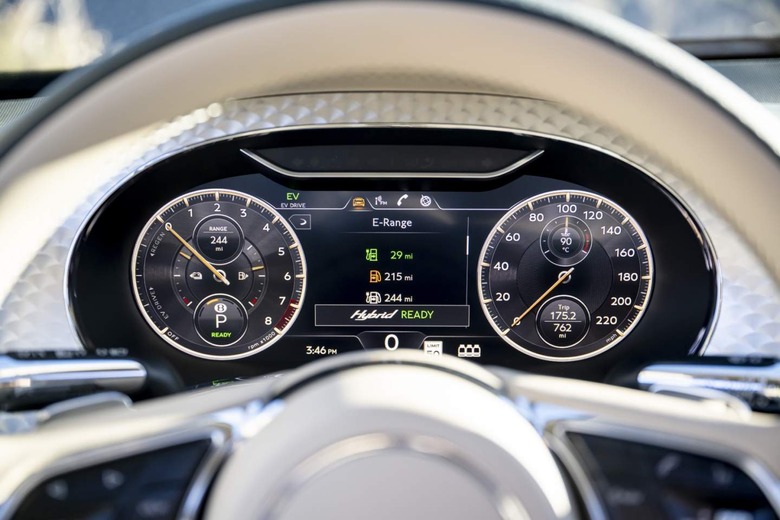
Because of the way that power is delivered, though, the hybrid feels more potent, more eager. It's something we've seen again and again with electrified vehicles, and it's a valuable reminder that there's more than numbers on paper to define how a vehicle feels in the real world. The Flying Spur Hybrid is about 400 pounds heavier than the V8 – which was already hefty, with a curb weight north of 5,100 pounds – but the E-Motor more than makes up for that in practice.
Of course, that's assuming you have electricity. Bentley's focus here isn't really EV-only driving – final EPA numbers aren't available, but figure on around 25 miles of that at most – and the E-Motor weighs in to smooth out the 8-speed DCT gearbox's shifts and work in tandem with the V6 for maximum performance. If you've programmed a route into the navigation, the Flying Spur Hybrid will proactively decide when to use gas, when to use electric, and when to blend the two, aiming to have you arrive with the battery just depleted. That prediction worked surprisingly well.
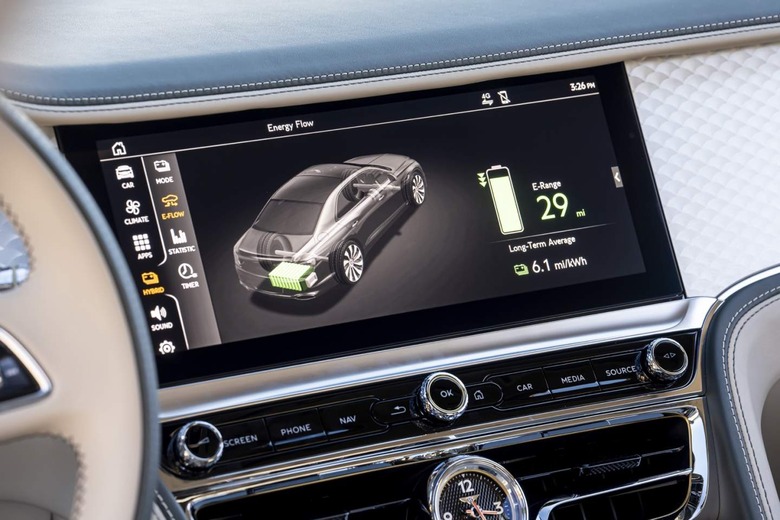
Skip the navigation, though, and the car can't do the fancy math. There's more chance, then, of you using up all the battery's charge and discovering you're down to the V6's power alone: they're not embarrassing numbers, but then this is not a lightweight car.
The hybrid system will top up the battery along the way courtesy of regenerative braking – which requires a little finesse to balance with the transition to the Flying Spur's vast iron brakes – and excess power from the gas engine, but there's no explicit "Charge" mode in the way that stablemate Porsche offers on its PHEVs. Bentley says that was a conscious decision, since using the V6 as a generator really isn't that efficient compared to plugging in.
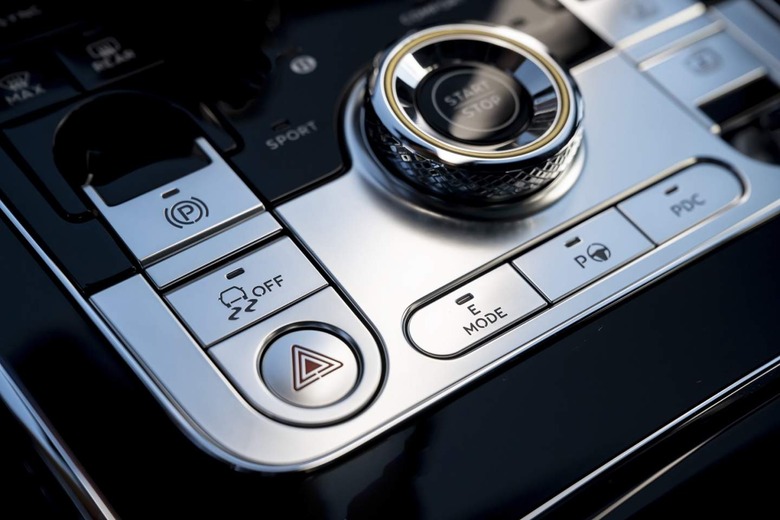
The other downside is the soundtrack. Normally, the Flying Spur Hybrid wafts with a gentle thrum, subtle and eminently suited to super-lavish limousine duties. Plant your right foot, though, and the V6's more mainstream growl just can't match the bark of Bentley's V8, nor the furied whoosh of its W12.
It's not a bad noise, it just isn't quite as melodramatic or refined as you might hope for. Saying that, the Flying Spur's ability to glide in electrical near-silence at speeds up to 80 mph more than makes up for it. Bentley's four-door was already quiet, but the combination of reduced vibration and noise leaves the cabin with cathedral-like hush.
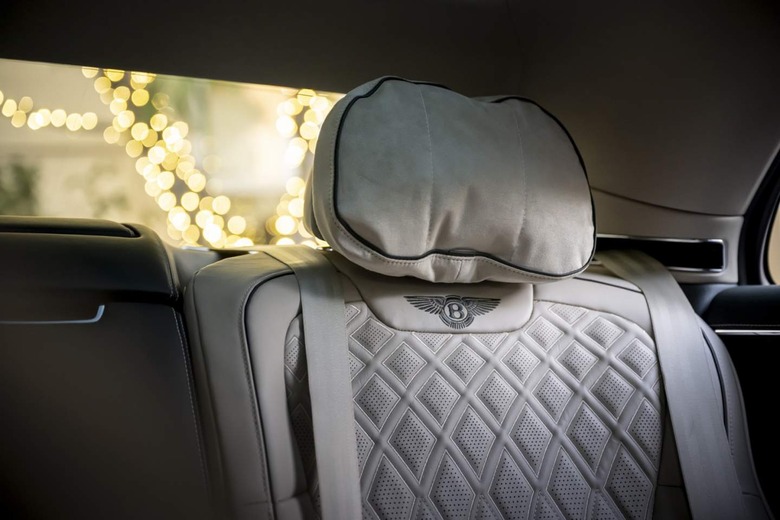
More eager drivers may be disappointed to discover that the Bentley Dynamic Ride and all-wheel steer option can't be added to the hybrid car. That means no trick anti-roll bar to quash lean, and no rear axle steering to magically shorten the impact of the near-126 inch wheelbase. The three-chamber air springs and continuous damping control still work their relative wonders, and the Flying Spur Hybrid sweeps imperiously through the curves, but the Flying Spur V8 keeps the crown for the most impressive ride.
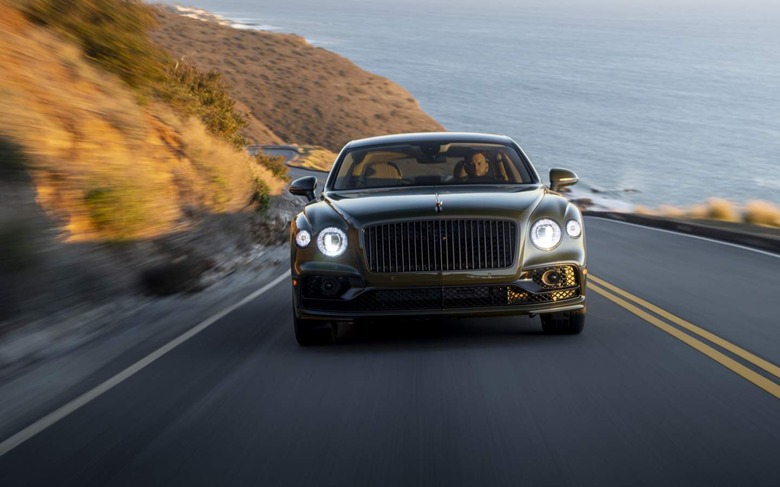
The reality is that, when the gas kicks in, there's as close to a sense of disappointment as you can get in a modern Bentley. That vague awareness of a missed opportunity for the Flying Spur to be entirely electric, and reap all the obvious benefits from such an arrangement.
Make no mistake, this hybrid configuration does pay dividends. Economy in the high twenties is impressive for the segment, the EV refinement is there, and that instant torque is addictive. Nonetheless, it isn't difficult to imagine how prodigious the Flying Spur would be as a fully-electric vehicle.
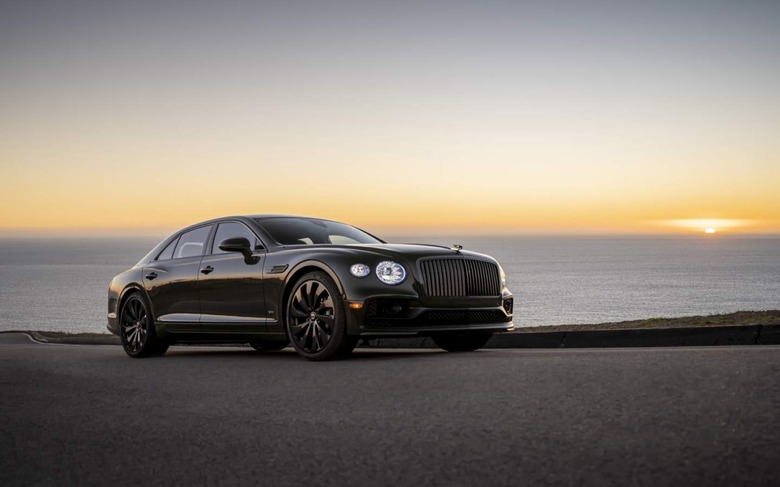
Bentley does have a BEV on the roadmap for 2025, mind, though it's not taking about which model will be its first pure electric. I'd expect an SUV rather than this stately sedan, to begin with. By 2030, though, its entire line-up will be BEV.
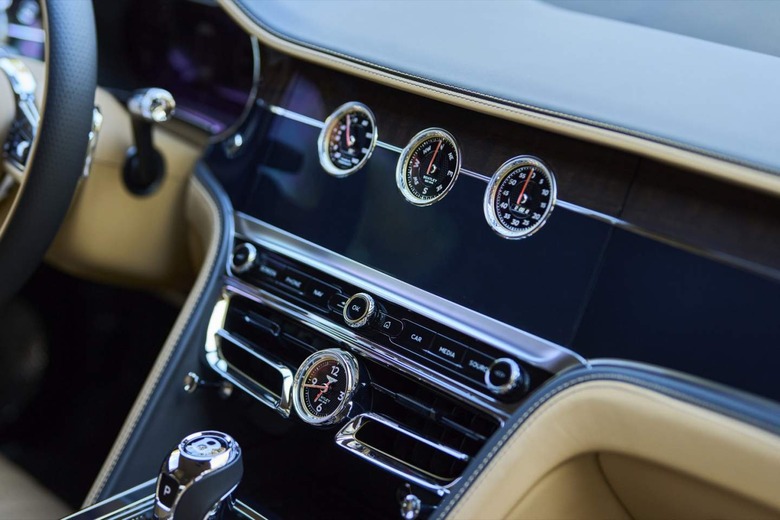
What's stopping that transition now? Bentley's argument is that not only does electric vehicle architecture need some final refinement, but that the infrastructure simply isn't at the stage it needs it to be. Given the patchy nature of public chargers, it might have a point: if true luxury is the absence of worry, the status-quo of hunting down a DC fast charger – and crossing your fingers it'll be functional and as swift as promised once you get there – is a far cry from the laissez faire ownership experience that Bentley promises.
Such charging stations aren't a concern of the Flying Spur Hybrid. It can handle a 7.2 kW Level 2 charger at most, taking about 2.5 hours to fully charge the 380V battery tucked under the trunk.
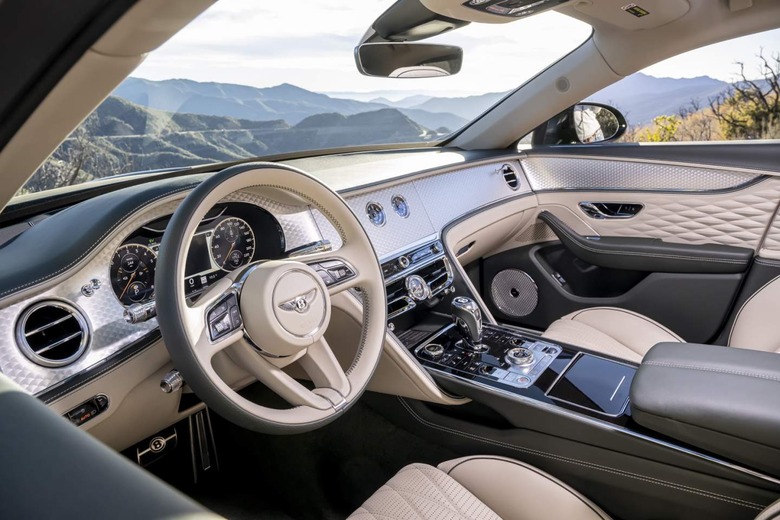
Inside, Bentley's continuing demonstration that it's on top of the game for cabin quality makes this no less pleasing than any other Flying Spur. There's wood, and leather, and metal of course, but it's what the artisans and engineers at Crewe do with them that stands out. Trim fluted and machined; bookended veneers; hide door panels and seat surfaces with such detail to the stitching and sculpting, it's as though some accommodatingly-knurled cow was bred especially for the purpose.
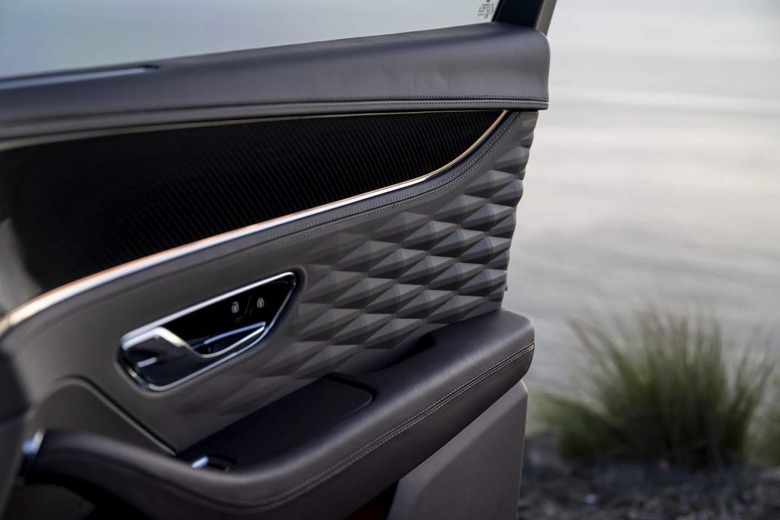
As always there's a lengthy list of "standard" trims and finishes, before you get to the even more custom excesses of the Mulliner division. The handiwork of Bentley's bespoke team can be as light a touch as a discreet monogram, through to the complexities of entirely unique paintwork.
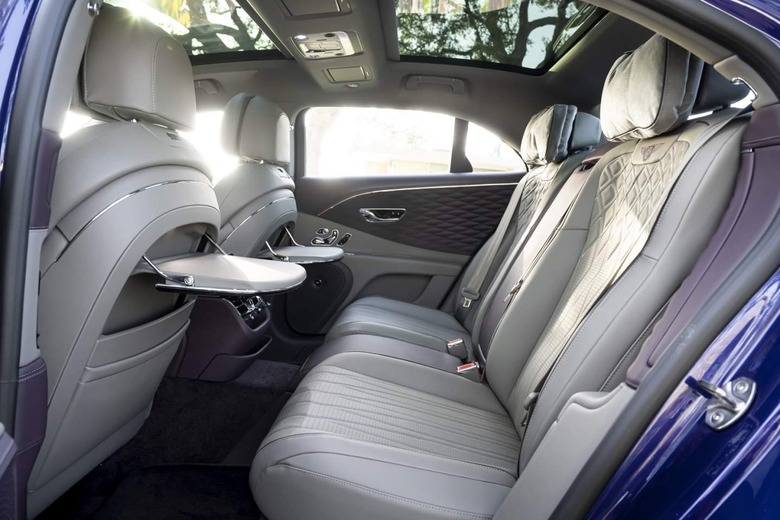
Certainly, the Flying Spur Hybrid satisfies Bentley's own goals here. The automaker wanted a lavish sedan with no sacrifice on overall range, together with better economy, all wrapped up in class-leading luxury. Yet it's hard not to see the blending point of old-school gas with the new electric drive as being the crux of the Flying Spur Hybrid's small annoyances beyond those achievements.
It's not alone in that: plug-in hybrid cars generally strike a compromise in their delivery of internal combustion reassurance with new green credentials. If the Flying Spur's balance there stands out more than is the case with other, more humble hybrids, it's only because Bentley and compromise so seldom ride together.
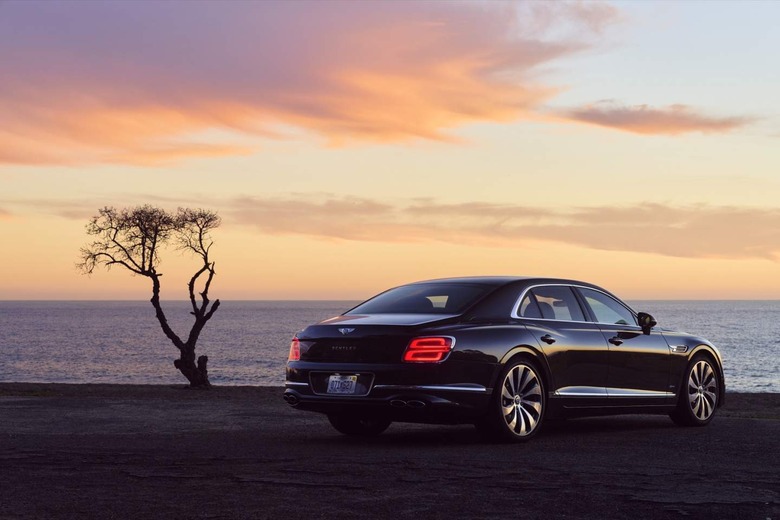
As an addition to the Flying Spur range, this PHEV will undoubtedly find favor with buyers just as the Bentayga Hybrid already has. As a tease of just what we can expect from a fully electric Bentley, though, it's genuinely exciting. The demise of the storied W12 gas engine may be sad, but it's hard to argue against the idea that electrification's torque and temperament are just what Bentley has always been aiming for.
